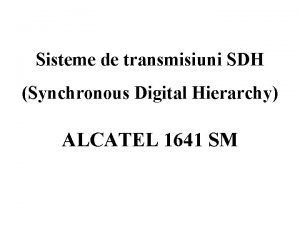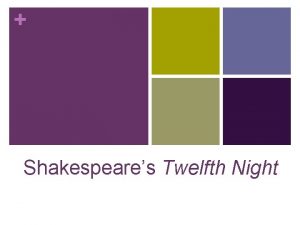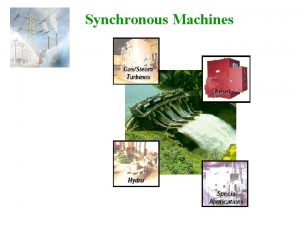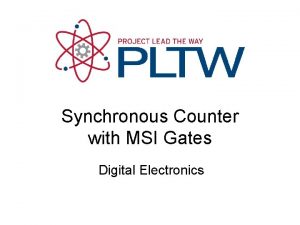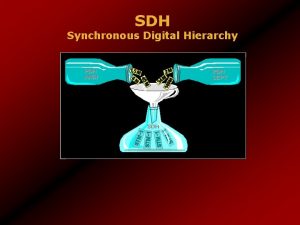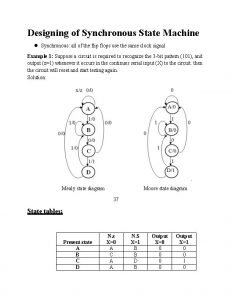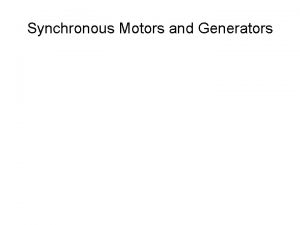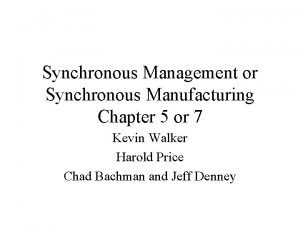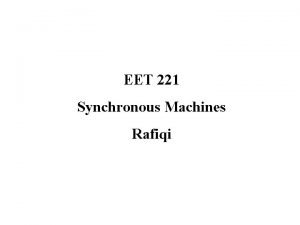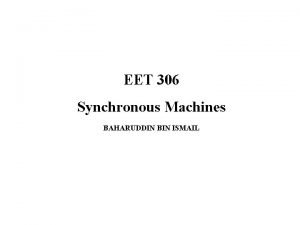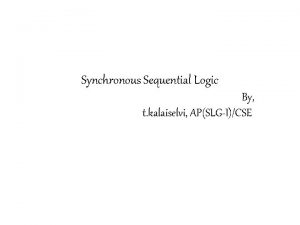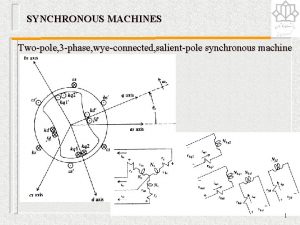Issues of the Synchronous Digital Hierarchy Twelfth Meeting

















- Slides: 17

Issues of the Synchronous Digital Hierarchy Twelfth Meeting

Network Design Elements l Multiplexer l l l Regenerators l l Rregenerates a perfectly formed signal Add/drop multiplexers (ADMs) l l l Translates STM-1 signals into STM-4, STM-16 or STM-64. Demultiplexes in the opposite direction of transmission. Carries out a switching function with pointer mechanism Drop out’ a VC which can then be replaced (add) with another VC. Cross-connects or Digital Cross Connecs (DXCs) l l Carries out a switching function with pointer mechanism Has both SDH and PDH interfaces, Has large number of switching connections (cross-connects) between these interfaces. Allow large numbers of paths to be interconnected at points of high traffic density.

SDH Network Structure

Vertical Add Drop Multiplexer (ADM) l l l ADMs are installed between STM-1 terminal multiplexers VCs can be dropped out of the STM-1 frame at each of the intermediate (add/drop) nodes. (ADMs) Similarly, other VCs can be added in their place; The total capacity of the path at any point cannot be greater than the STM-1 payload VC-12 can only be added into a vacant position.

Ring Add Drop Multiplexer (ADM) l l Joining the two terminal multiplexers together, Then replace them with ADMs. Access to and from the ring is via the add/drop capability of each ADM Example: l l A and C are connected by fibre-optic cables. Traffic is duplicated and passes around the entire ring, Traffic travels in opposite directions Switching position at A and C only determines that the traffic is added and dropped from the ring.

Restoring traffic in a Ring ADMs l l No manual intervention, in the event of a failure. Full restoration in a few milliseconds Referred to as self-healing. Example: l l l The event of a break in the ring. Immediate switching actions at C passes the traffic to the standby fibre. Why C l The closest node the to the failure

Network Architecture Layer 1 Layer 2 Layer 3

Synchronization l l l Two SDH networks, A and B Each network is running a separate clock An STM-1 line system connecting the two are shown below.

Synchronization: Clock Drift a) The original signal generated in using the clock of network A b) The same signal, that is produced by network A, generated using the clock of network B l This clock drifting cause corruption of data l Buffers are used at the interface to control the differences.

Synchronization: Buffer l l l A buffer is a storage device used in time division multiplexing. Data is ‘written’ into a buffer using clock A Data is ‘read out’ using clock B Buffer size is chosen based timing variations between reading and writing. When will the buffer empty l When clock B is faster than A.

Primary Referencing Clock

Pointer Operation – Controlled Slips l l l The timing of the STM-4 frame is generated by byte-interleaving four VC-4 s, Each VC-4 is contained within an STM-1 frame Example, l l l (a), (b) and (c) – originate from same station as the STM-4; (d) comes into the station on an STM-1 line system. STM-4 will drift apart from the STM-1 signal The buffer approaches its lower limit STM-4 makes a pointer adjustment to the location of VC 4(d). In frame n + 1 This is referred to as wander

Jitter l l l Jitter is a term used to describe the phase variation between signals Reference signal is a bit-stream to be transmitted using a clock pulse Jittered signal is the same bit-stream after it has been transported across an SDH network with the following difference: l l It has pulses that do not line up with the clock. If this clock is used, it will read a ‘ 0’ and not a ‘ 1’ as transmitted

Jitter: De-synchronizer

Bit Error Rate (BER) l l l transmission A sequence of 100 bits There are two bits in error at the end. BER = 2 × 10 -2. Failure if BER >10 -3 Acceptable if 10 -6 < BER < 10 -3 Normal if BER <10 -6

Bit-Interleaved parity (BIP) l l The frame is divided into blocks of bits Organize them in a columns Each column has an extra bit added (even parity of odd parity) Perform a parity check

Error performance l l l l Errored block (EB) – a block in which one or more bits are in error. Errored second (ES) – a 1 second period with one or more errored blocks (includes severely errored seconds during available time). Severely errored second (SES) – a 1 second period that contains 30% or more errored blocks. Background block error (BBE) – an EB in available time not occurring as part of an SES. ES ratio (ESR) – the ratio of ES to total seconds in available time. SES ratio (SESR) – the ratio of SES to total seconds in available time. BBE ratio (BBER) – the ratio of EB to total blocks, excluding SES and unavailable time. Unavailable time – unavailable time commences at the start of a block of ten consecutive SESs, and finishes at the start of a block of ten consecutive seconds, each of which is not an SES. Memorize
 Pdh sdh
Pdh sdh Synchronous design methodology
Synchronous design methodology Structure of twelfth night
Structure of twelfth night Twelfth night ppt
Twelfth night ppt Daylight and champaign discovers not more
Daylight and champaign discovers not more Structure of twelfth night
Structure of twelfth night Twelfth night dramatis personae
Twelfth night dramatis personae Twelfth night act 1 scene 5 translation
Twelfth night act 1 scene 5 translation Duke orsino
Duke orsino Themes in twelfth night
Themes in twelfth night Twelfth song of thunder figurative language
Twelfth song of thunder figurative language Twelfth night act 5
Twelfth night act 5 Duke orsino character analysis
Duke orsino character analysis Jenny phelps
Jenny phelps Msik
Msik Ricky w griffin management 12th edition
Ricky w griffin management 12th edition Satire in twelfth night
Satire in twelfth night Deverell twelfth night
Deverell twelfth night
